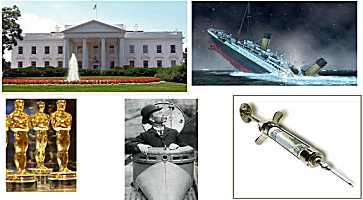
SOME OF THE WORLD’S MOST ICONIC OBJECTS HAVE BEEN CREATED BY THE IRISH
The White House – 1600 Pennsylvania Ave NW, Washington, D.C. 20500, USA might look like any typical US address until you realize that it is the abode of the US President. The White House (perhaps the most photographed house in the history of humanity?) was designed by Irish architect James Hoban who was born in Kilkenny in 1758.
The Titanic – Surely the worlds most famous ship was built in Belfast at the Harland and Wolff shipyard. The mighty vessel sank on her maiden voyage with the loss of over 1500 lives.
The Hypodermic Needle – In 1844 Doctor Francis Rynd, a Dublin-based doctor, invented the hypodermic syringe which has been used as an instrument of curing and terror millions of times since. The world’s very first subcutaneous injection was administered in Dublin’s Meath hospital.
The Submarine – In 1900 the US Navy purchased a submarine called the ‘Holland VI’ renaming it the ‘USS Holland’ and the modern submarine age began. It was invented by John Philip Holland from County Clare who was the first to use battery power for submerged conditions in a submarine.
The Oscar – That most coveted of pieces of metal was designed by Austin Cedric Gibbons (1893 – 1960), the Irish art director and film production designer in 1928. The design represent sa Knight standing on top of a Film Reel gripping a sword.
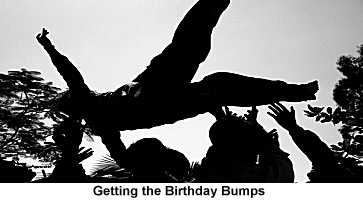
IRISH KIDS WERE GIVEN ‘THE BUMPS’ ON THEIR BIRTHDAY
A tradition that is very familiar to those who grew up in 1970’s Ireland is that of the ‘bumps’. If it was your birthday and that fact became known among your schoolmates then you had better watch out! If you were grabbed in the schoolyard then you would be subjected to a succession of lifts and drops with your back either gently hitting grass or bouncing off hard concrete via the feet of your captors, depending on their mood. Counting upwards to the number of years the grand finale was an especially extravagant throw into the air at which point those among the mob who were most afraid of repercussions might try to catch you on the way down. Or not.
With the advent of law suits, school ‘codes of conduct’ and a general civilizing of the population the practice seems to have all but died out in Ireland but is still popular in English boarding schools and in India, apparently.
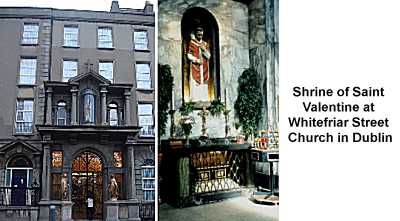
SAINT VALENTINE IS INTERRED IN DUBLIN
Completely true. Whitefriar Street Church in Dublin is the unlikely resting place of the relics of Saint Valentine that were presented by Pope Gregory XVI to an Irish Carmelite named John Spratt in the year 1835. In 1836 the remains were received by Archbishop Murray of Dublin and have been displayed in Whitefriar Street Church ever since. Engaged couples even attend the special mass held there on February 14th to bless their impending union.
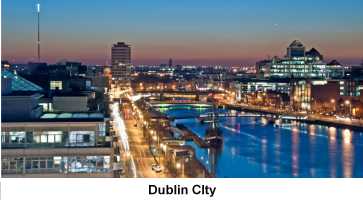
DUBLIN MIGHT HAVE BEEN CALLED BLACKPOOL
The Gaelic words ‘dubh linn’ meaning a black pool or mire describe an ancient natural treacle lake located within the confines of Dublin Zoo in the Phoenix Park. The merging of these two words into Dublin clearly occurred before the practice of anglicizing names based on their English meaning took hold, else the fair city might have been known as Blackpool (or Blacklake, or Blackmire!).
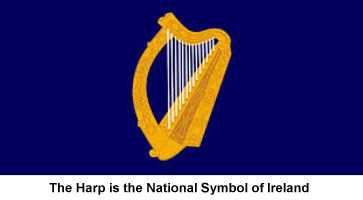
IRELAND IS THE ONLY COUNTRY IN THE WORLD WHOSE NATIONAL SYMBOL IS A MUSICAL INSTRUMENT
After years of leprechauns and blarney on television and film it is no wonder that most people the world over think that the Shamrock is the national symbol of Ireland. It is not. The Harp is. It adorned every Irish coin (before we gave away our sovereignty to the European Central bank, and see how that ended up) and is the official flag of the President of Ireland.
The reason for the prominence of the Shamrock in Irish culture is of course Saint Patrick, who, as explained by countless thousands of Irish school teachers over the last century, used the Shamrock to explain the Holy Trinity.
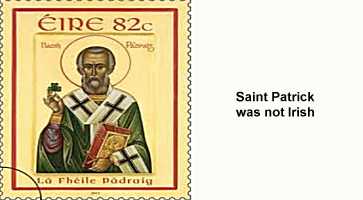
SAINT PATRICK WAS NOT IRISH
And the national Saint of Ireland is…. a Briton. That’s right, the person responsible for the creation of more shamrocks, shillelaghs and green-foolery than anyone else was captured by Irish raiders from Britain (likely Wales but perhaps Cumbria) when he was about 16 years old.
It has also been suggested by Irish academic T. F. O’Rahilly that there may in fact have been two Patricks with many of the traditions associated with Saint Patrick more accurately belonging to Paladius who was the first Bishop of the Christians of Ireland sent by Rome, and who preceded Saint Patrick.
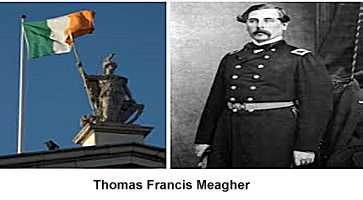
THE COLORS ON THE IRISH FLAG HAVE SPECIFIC MEANING
Ok lets get this straight. The Irish flag is not green, white and gold – it is green, white and orange! The orange is quite important to those in Ulster representing as it does the Protestant tradition there. The Green represents the Gaelic Irish. The white is a place in the middle where the two traditions can co-exist.
A very elegant design that was presented to the ‘Young Irelander’ Thomas Francis Meagher in 1848 by some French women who were sympathetic to the plight of famine-ravaged Ireland at that time. It was not until the 1916 Easter Rising that the flag became universally accepted as the flag of a free Ireland.
 Michael Green is Manager of The Information about Ireland Site
Michael Green is Manager of The Information about Ireland Site
I love reading this about Ireland, thank you